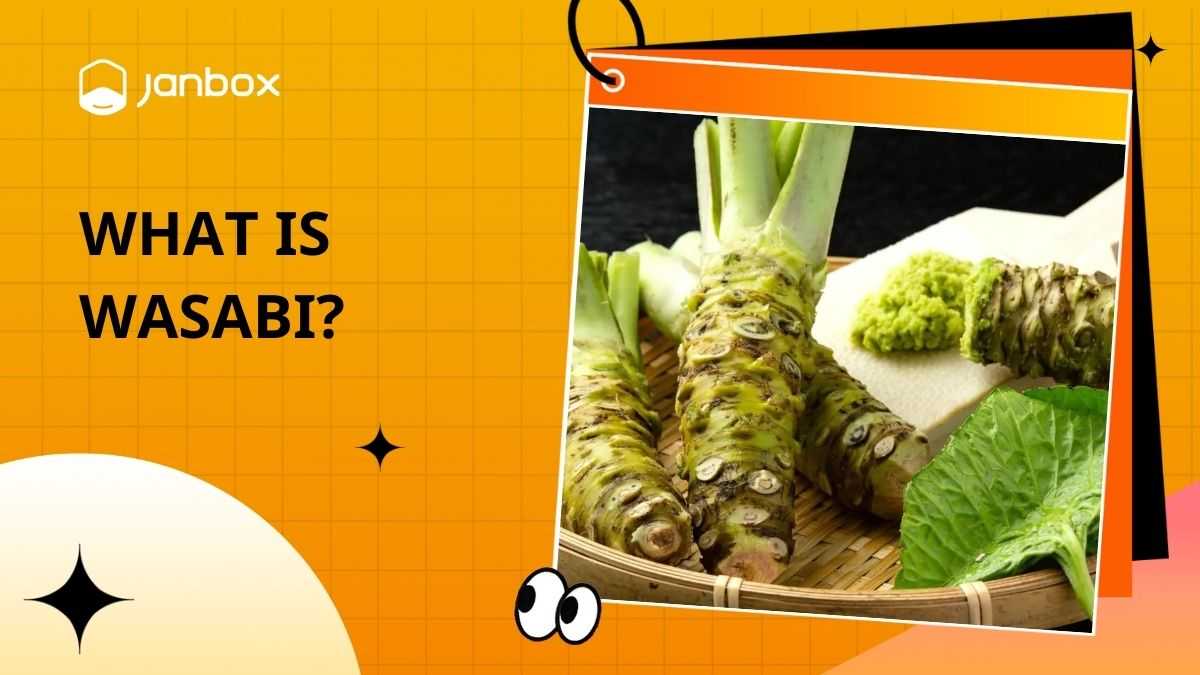If you are into Japanese food, chances are you have tasted wasabi at some point. But are you familiar with “What is Wasabi?” Not only is it famous for a spicy kick and vibrant color, but wasabi also has many hidden secrets that few people are aware of. In this blog, we will dive into the key facts and meaning of wasabi, from its origins to its surprising health benefits.
1. A Complete Introduction About “What Is Wasabi?”
Perhaps you have encountered a vibrant green paste or powder often served alongside sushi and sashimi, commonly known as wasabi. Although wasabi originates from Japan, the wasabi served in sushi restaurants outside of Japan is frequently a different variety. So, let’s find out“What is the wasabi’s real variety?”
1.1. What Is Wasabi?
Wasabi, with its scientific meaning of Wasabi name Wasabia japonica and also known as Japanese horseradish, is a native Japanese plant. The rhizome, when grated, transforms into the spicy green paste that is usually served with sushi.
Real wasabi offers a rich and layered taste experience. In addition to its spiciness, it has subtle hints of sweetness and a unique freshness that set it apart from replicas.
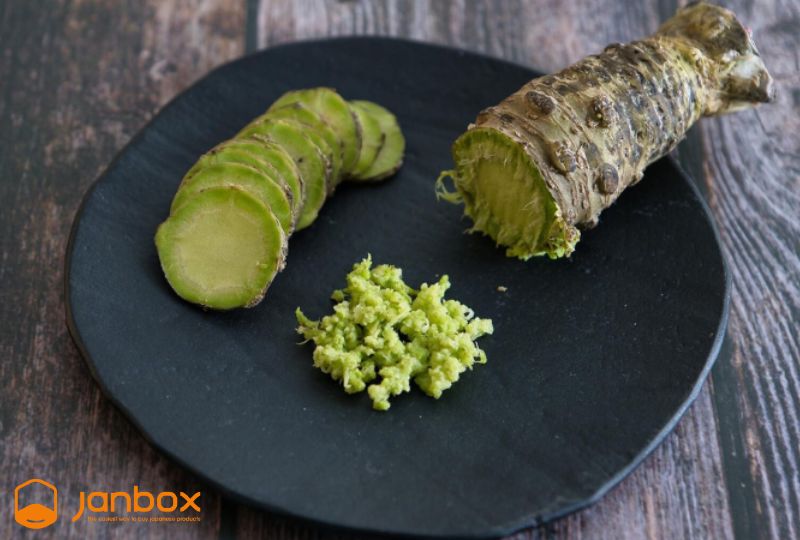
1.2. What Is Wasabi Made From?
If you have little knowledge about “What are wasabi made of”, real wasabi comes from the Brassicaceae family, which it shares with radishes, horseradish, and mustard, all known for their sharp and spicy flavors.
However, due to the high cost of genuine wasabi, what is typically available in stores or paired with prepackaged sushi is often made from horseradish powder, artificial coloring, and may include mustard powder along with thickeners such as flour or cornstarch. For those who love the intense flavor of horseradish, consider trying out some horseradish recipes.
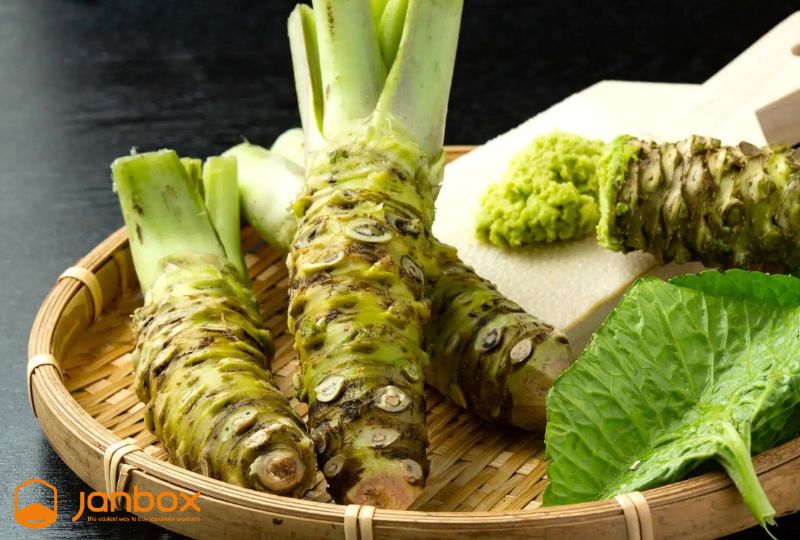
1.3. What Does Wasabi Taste Like?
True fresh-grated wasabi has a bright and green flavor with a mild heat that quickly dissipates. It is pungent yet refined, allowing the raw fish’s taste to be highlighted. The heat from wasabi paired with sushi is meant to complement the fish’s flavor, not to dominate it. At the finest sushi restaurants, the chef thoughtfully applies a precise amount of wasabi to each sushi piece (usually in nigiri form) to harmonize with the fish’s flavor profile.
In contrast, the burn from fake “wasabi” is more intense and lingers longer because it is made with horseradish and occasionally mustard. An overuse of this imitation wasabi will completely drown out the subtle flavors of the sushi.
1.4. How Hot Is Wasabi?
Are you curious about “What is wasabi heat”? Although wasabi is spicy, it does not produce the same heat as chili peppers. Chilis activate the palate, while wasabi affects the nose. Its spiciness is unique and most closely resembles that of horseradish or hot mustard.
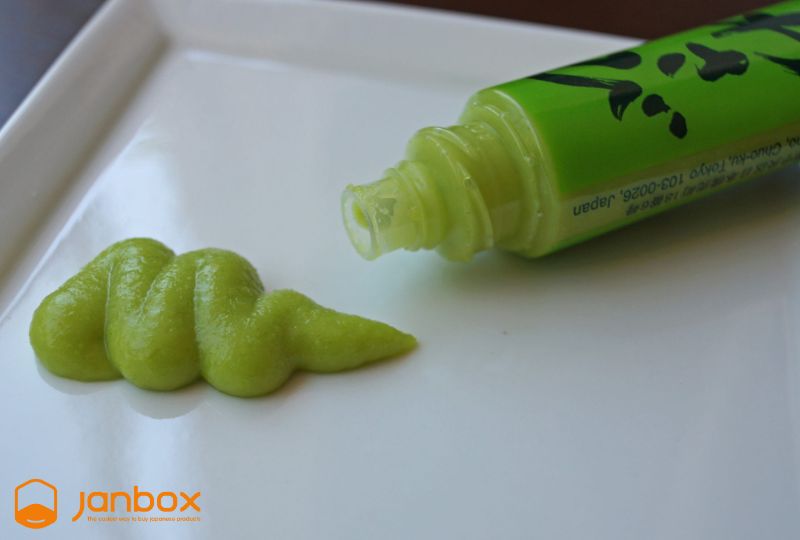
1.5. What Makes Real Wasabi So Costly?
Since wasabi can only grow under very particular conditions, it is considered one of the world’s most expensive crops. Consequently, many people outside of Japan might have never experienced the true wasabi taste. So, what is wasabi’s growing environment? The plant of wasabi thrives naturally in mountainous regions, particularly along the banks of river valleys in Japan.
The perfect environment for growing wasabi is hard to come by, as the plants require their stems to be partially submerged in clear, flowing water, adding an extra layer of complexity to the process. Without Japan’s mountain river valleys and their stream beds, cultivating wasabi on a commercial scale is very difficult, making it a costly endeavor.
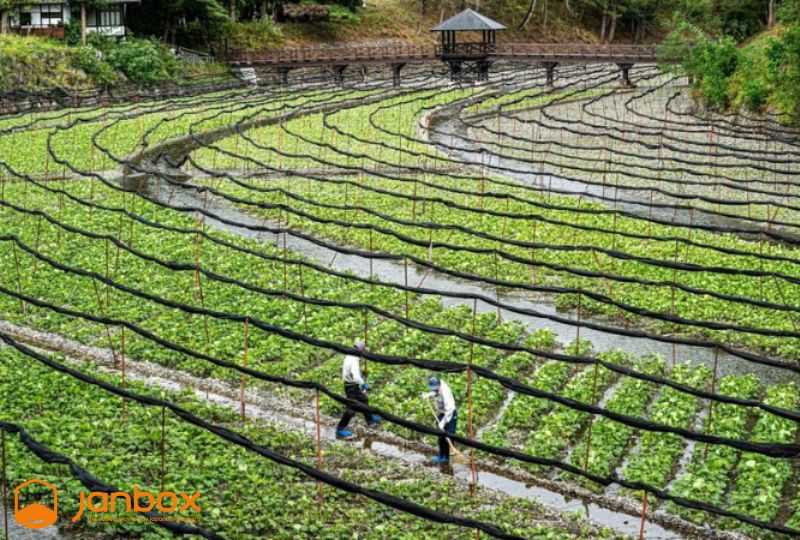
While Shimane Prefectures, Iwate, and Nagano, are noted for their wasabi production in Japan, the Izu Peninsula stands out as the leading region, contributing around 70% of Japan’s total wasabi supply.
1.6. How To Recognize Real Vs. Fake Wasabi?
Now, you might be wondering, “What is real wasabi?” The key lies in the differences in the taste and appearance.
Based On The Taste
The experience of tasting genuine wasabi is truly unique. It has a fresh, grassy flavor with a hint of sweetness, a quick burst of heat that fades just as swiftly, leaving a clean aftertaste. In comparison, fake wasabi made from mustard and horseradish is more intense, with a harsh taste that lingers and can easily overpower other flavors. The absence of subtle aromatic nuances, characteristic of real wasabi, is a clear indicator that you are dealing with an imitation.
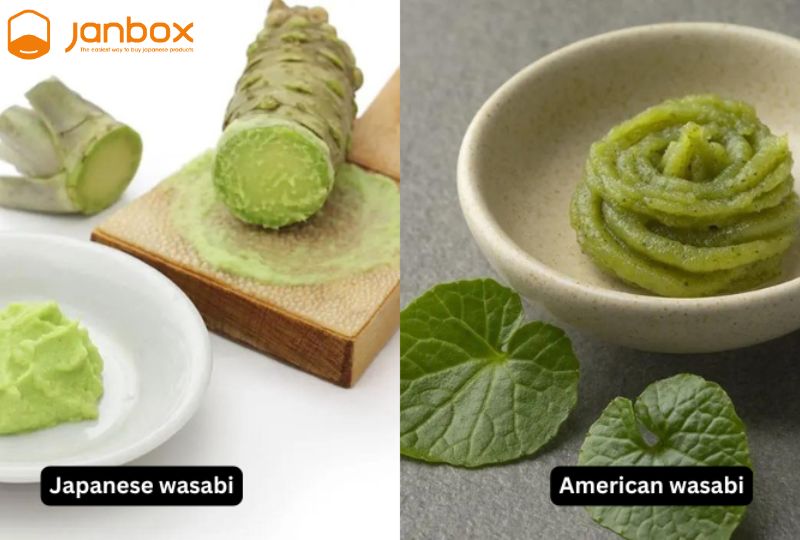
Based On The Appearance
The visual distinction between authentic and imitation wasabi is slight, but a discerning observer can recognize it. Real wasabi paste, when freshly made, has a soft light green hue, slightly paler than mint, and a smooth texture due to the fine grating of the rhizome.
By contrast, what is wasabi’s imitation appearance? Fake wasabi is often a brighter, almost neon green color because of the food coloring. It also has a grainy texture and a consistency similar to gel. The pronounced color difference is one of the easiest methods to spot authentic wasabi versus its imitation.
>>> Read more: 15+ Unique Japanese Vegetables you may not find it anywhere
2. Health Benefits of Wasabi And Potential Risks
Not only does hon-wasabi pair well with sushi, but it is also loaded with antioxidants, vitamins, and provides several health benefits. The primary class of active compounds in wasabi, known as isothiocyanates (ITCs), are what grant this root vegetable its antibacterial and anti-inflammatory qualities. If you want to know the details of “What is wasabi health benefit?”, below is the answer:
- It enhances the immune system’s function.
- It can benefit gut health.
- It may help manage arthritis and bone-related ailments.
- It could potentially decrease the risk of cancer.
- It may lower the chances of heart disease and maintain heart health
- It provides anti-inflammatory benefits for joint and muscle health.
- It has antibacterial properties and can kill bacteria found in food.
- It may lessen the effects of seasonal allergies.
- It can aid in healing respiratory conditions.
- It might help with fat loss.
3. How To Make The Most Of Wasabi?
Janbox will guide you in making the most of wasabi through helpful instructions on how to consume it and include it in various culinary creations.
3.1. How To Eat Wasabi Correctly?
Those lucky enough to have tasted true wasabi sauce understand that it should be enjoyed shortly after it is prepared. Wasabi’s peak flavor lasts only for around 15 to 20 minutes, after which its sharpness starts to decline. As wasabi comes from the ground rhizome of the Wasabia Japonica plant, its freshness diminishes rapidly. Once it is no longer fresh, the spicy kick also becomes less pronounced.
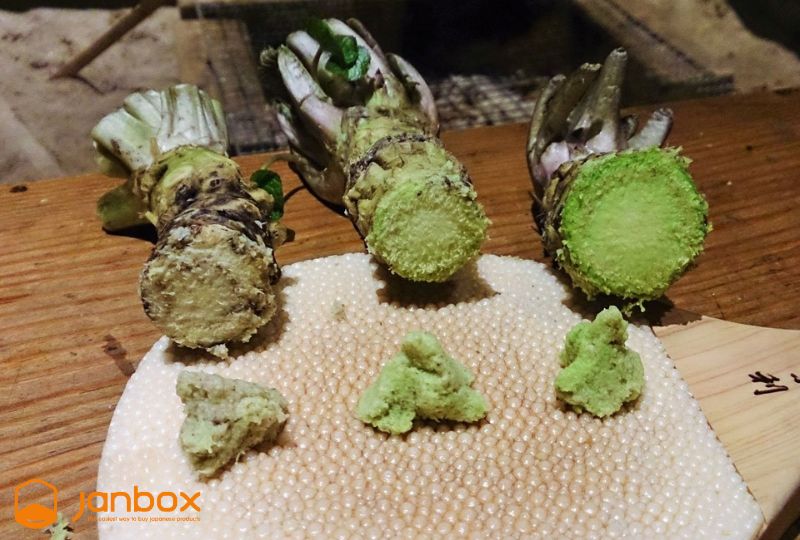
Freshly prepared wasabi has a bold, fiery flavor. If you are after a gentler taste, you do not need to worry about consuming it immediately. Just remember that the quicker you eat it, the stronger the heat will be, so it is a good idea to have some milk ready in case the heat becomes too intense.
Moreover, wasabi is not confined to being just a sauce – it can be used in a range of preparations. It serves as an ideal dipping sauce for almost any dish and works wonderfully as a salad topping or as a coating for meat or sautéed fish dishes.
Chefs who know how wasabi works will always prepare it right before serving to ensure its flavor is at its best when you taste it. Whenever you have wasabi, keep the 15-minute rule in mind. If you are preparing wasabi at home, make it the final step in your meal preparation.
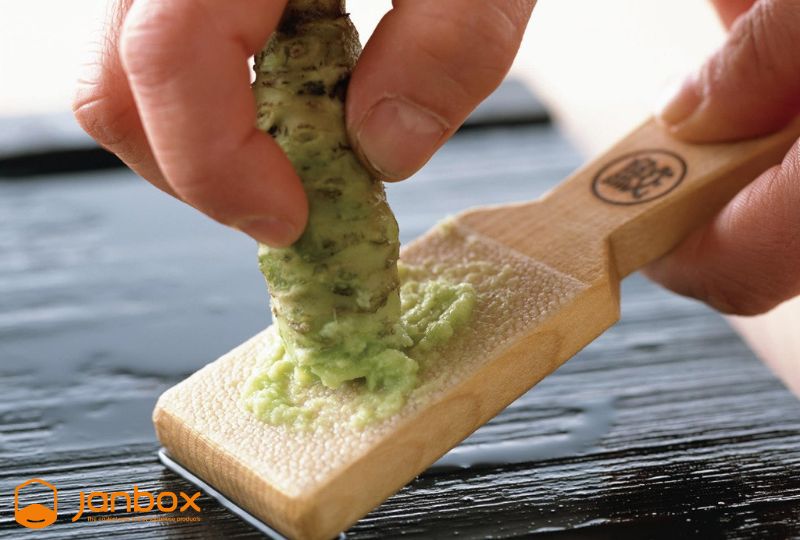
3.2. Tips For Adding Wasabi To Cooking
For those who are concerned about “what is wasabi cooking tip”, to elevate your cooking experience, take note of these tips on incorporating wasabi into your favorite recipes:
- Salad: To make a spicy vinaigrette for your salads, stir wasabi into rice vinegar or apple cider vinegar. Another option is to combine wasabi paste with mayonnaise and cream cheese for a thick and savory dip.
- Sandwiches: Liven up your sandwiches by substituting mustard with wasabi paste. Blend it with mayonnaise, salmon, and avocado or spread it on a grilled cheese sandwich for a spicier flavor.
- Soba: Soba, a Japanese noodle dish with a mild salty and umami flavor, is served with a simple dipping sauce and can be enjoyed either hot or cold. Wasabi is often paired with it for an additional spicy kick.
- Stews and Soups: Wasabi can be used to elevate the taste of stews and soups.
- Sauce for dipping: Wasabi can deliver a bold kick or a mild hint of flavor to dips and sauces.
- Marinade tofu or meat: For an Asian-inspired twist, try marinating your tofu or chicken with a touch of wasabi paste.
- Snacks: Wasabi peanuts are a delicious and healthy snack that can be easily made at home. Simply roast peanuts and coat them in wasabi paste for a flavorful and satisfying treat.
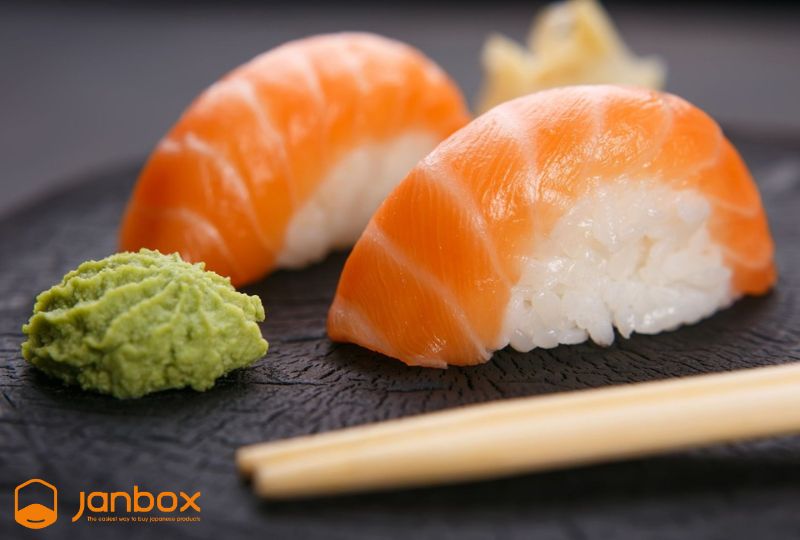
>>> Read more: Top 12 Best Wasabi Snacks You Should Try
4. Top-Quality Products Made With Wasabi
Beyond serving wasabi alongside sashimi or sushi, there are plenty of other wasabi products that are well-loved by many people:
- Wasabi powder: Fresh wasabi powder is usually created from English wasabi. To enjoy it as a paste, simply mix the powder with water.
- Wasabi plants: Every part of the wasabi plant is edible, making it a fantastic choice for gardeners who enjoy cooking.
- Wasabi oil: Wasabi oil combines the rich taste and aroma of premium wasabi with high-quality rapeseed oil. This unique and versatile ingredient can elevate the flavor of various dishes, from sashimi and sushi to mayonnaise, carpaccio, grilled meats, and even marinades and dressings.
- Wasabi vodka: To create this spirit, they distill real, fresh wasabi to preserve its naturally creamy texture.
- Wasabi mayonnaise: The all-natural mayonnaise, delicately infused with the mild and authentic taste of fresh wasabi, complements smoked salmon canapés, adds flavor to sandwiches, and brings a vibrant touch to potato salads.
- Wasabi mustard: The tangy mustard combined with the true flavor of fresh wasabi is a tasty addition to beef, ham sandwiches, cheese, or pâté. It also works well in sauces and salad dressings, offering a one-of-a-kind flavor with the distinct, aromatic spice of fresh wasabi.
- Flowers: Raw wasabi flowers bring a light, tingling heat when eaten and make for an elegant garnish on fish dishes or maki rolls.
- Leaves and stems: The large, heart-shaped leaves of Japanese wasabi have a mild wasabi taste with a gentle heat. In Japan, they are commonly enjoyed fried in tempura batter, but they are also great sautéed, stir-fried, or boiled in dishes like stews and noodles. Wasabi stems, traditionally pickled in sake lees, offer a crunchy texture and a raw flavor similar to spring onions and radish, making them an unconventional yet delicious addition to sashimi or sushi with real wasabi paste. A wasabi stem can also serve as a unique stirrer for a wasabi-inspired Bloody Mary.
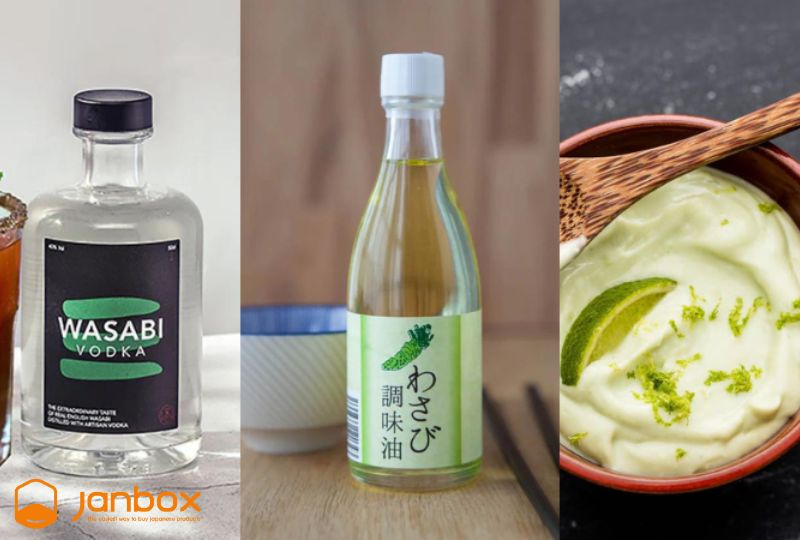
5. What Is The Best Way To Buy Japanese Wasabi?
Wasabi, the distinctive green condiment often served with sushi, has made its mark in various cuisines around the world. Its pungent flavor and one-of-a-kind texture have become a favorite among many, making it a highly sought-after ingredient. To truly experience wasabi’s quality, sourcing it directly from Japan is the key. That’s where Janbox comes in, a platform that links Japanese product enthusiasts with genuine products from Japan.
Janbox enables you to browse various Japanese marketplaces such as Amazon Japan, Mercari, and Rakuten to find a diverse range of authentic wasabi products from Japan. Detailed descriptions are available in many languages like English, Vietnamese, Japanese, Chinese, and Korean, making it simple to choose the items that best suit your needs. Global payment methods, including Alipay, PayPal, and credit cards, are accepted.
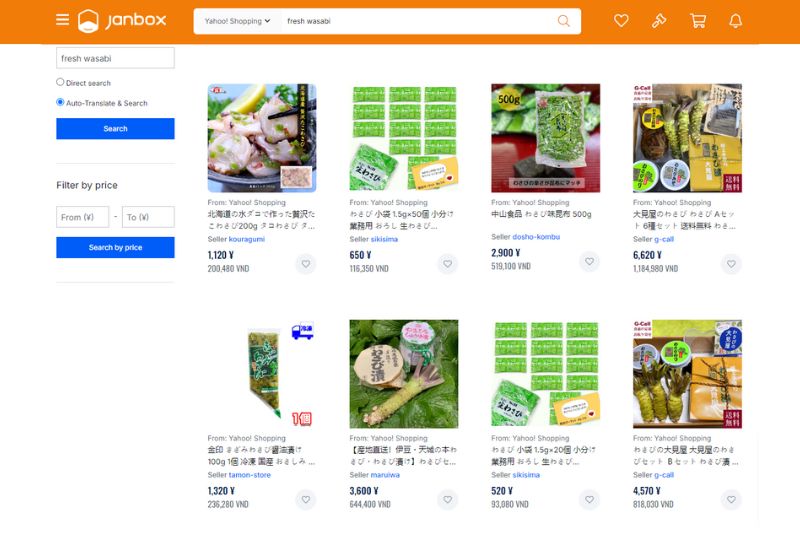
Just simply type “wasabi” and select the wasabi you want from thousands of results, and Janbox will take care of the shipping process for you.
>>> Read more: How To Buy From Mercari Japan with Janbox Proxy Service
6. FAQs
Let’s find out some short answers to some of the most frequently asked questions about wasabi.
6.1. What Is The Real Wasabi Price?
If you have not known about “What is wasabi’s price?”, the price of true wasabi is notably high, typically ranging from 160-250 USD per kilogram. The exact cost can vary depending on how readily available it is.
6.2. What Is American Wasabi?
“American wasabi,” also called “Western wasabi,” is the imitation wasabi, typically made from European horseradish and quite distinct from genuine Japanese wasabi that we have mentioned throughout the blog – “What is Japanese wasabi?”. An exception is the wasabi grown on select U.S. farms using traditional Japanese methods. These farms cultivate authentic Wasabia japonica or Eutrema japonicum which is the true Japanese wasabi plant. Such products should be labeled as such, and their higher price is a good indicator of authenticity.
6.3. What Is The Proper Way To Eat Wasabi With Sushi?
Sushi experts recommend placing a touch of wasabi directly between the fish and the rice to fully appreciate its nuanced flavors. It is best to start with a modest amount and increase it gradually to match your heat tolerance level.
Conclusion
With a deeper understanding of “What is wasabi?”, it’s time to take your taste buds on an adventure! Explore various wasabi products and experiment with incorporating this unique flavor into your dishes. There’s no better way to appreciate wasabi than by tasting it yourself! Be sure to visit Janbox to get the best wasabi products for your kitchen.
Website: https://janbox.com
Email: [email protected]

